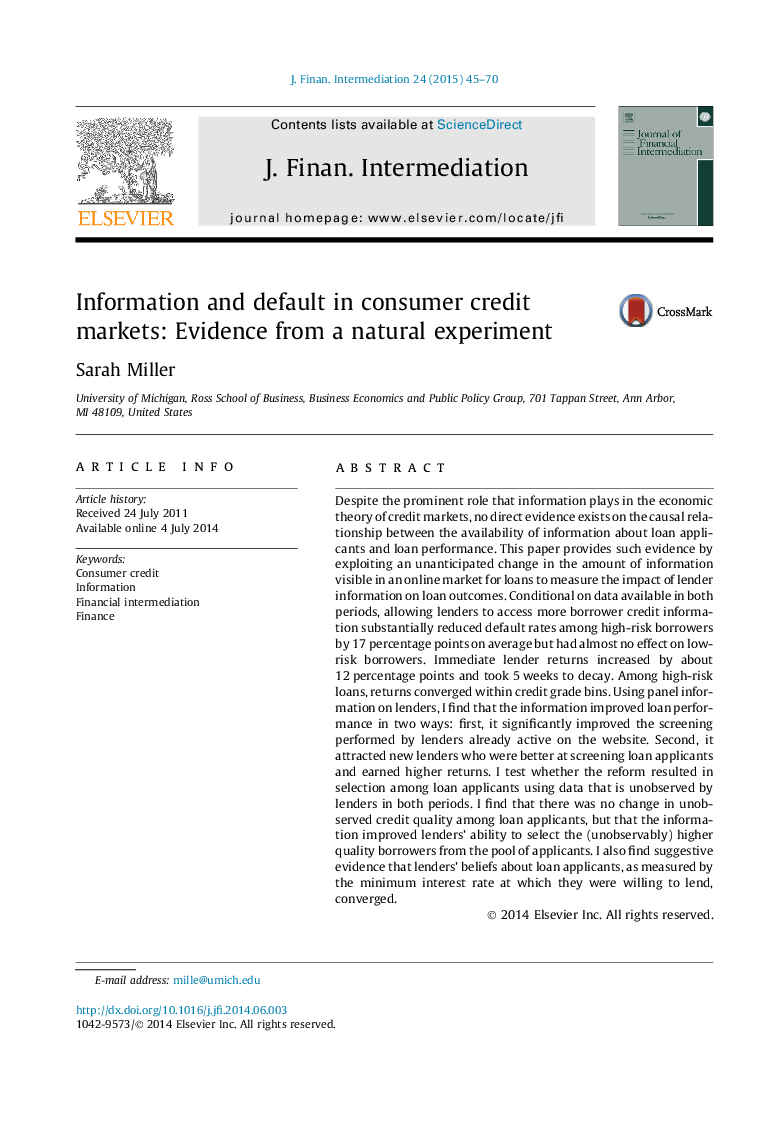| Article ID | Journal | Published Year | Pages | File Type |
|---|---|---|---|---|
| 960758 | Journal of Financial Intermediation | 2015 | 26 Pages |
Despite the prominent role that information plays in the economic theory of credit markets, no direct evidence exists on the causal relationship between the availability of information about loan applicants and loan performance. This paper provides such evidence by exploiting an unanticipated change in the amount of information visible in an online market for loans to measure the impact of lender information on loan outcomes. Conditional on data available in both periods, allowing lenders to access more borrower credit information substantially reduced default rates among high-risk borrowers by 17 percentage points on average but had almost no effect on low-risk borrowers. Immediate lender returns increased by about 12 percentage points and took 5 weeks to decay. Among high-risk loans, returns converged within credit grade bins. Using panel information on lenders, I find that the information improved loan performance in two ways: first, it significantly improved the screening performed by lenders already active on the website. Second, it attracted new lenders who were better at screening loan applicants and earned higher returns. I test whether the reform resulted in selection among loan applicants using data that is unobserved by lenders in both periods. I find that there was no change in unobserved credit quality among loan applicants, but that the information improved lenders’ ability to select the (unobservably) higher quality borrowers from the pool of applicants. I also find suggestive evidence that lenders’ beliefs about loan applicants, as measured by the minimum interest rate at which they were willing to lend, converged.
